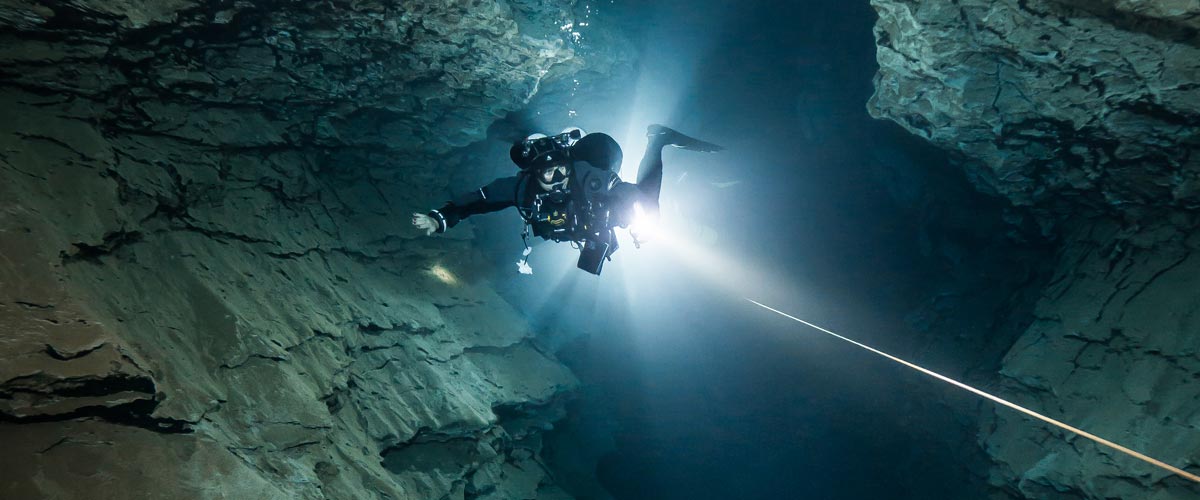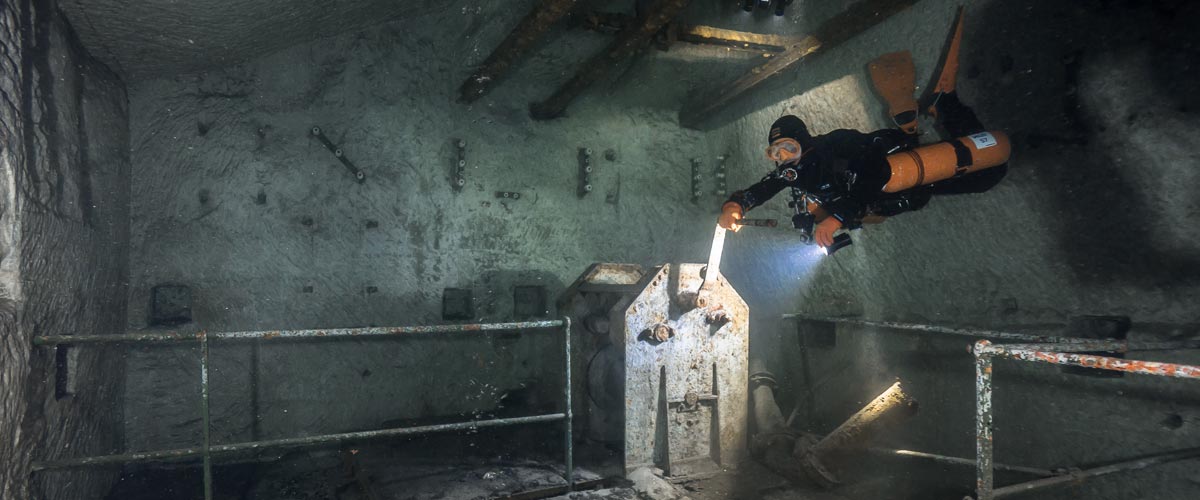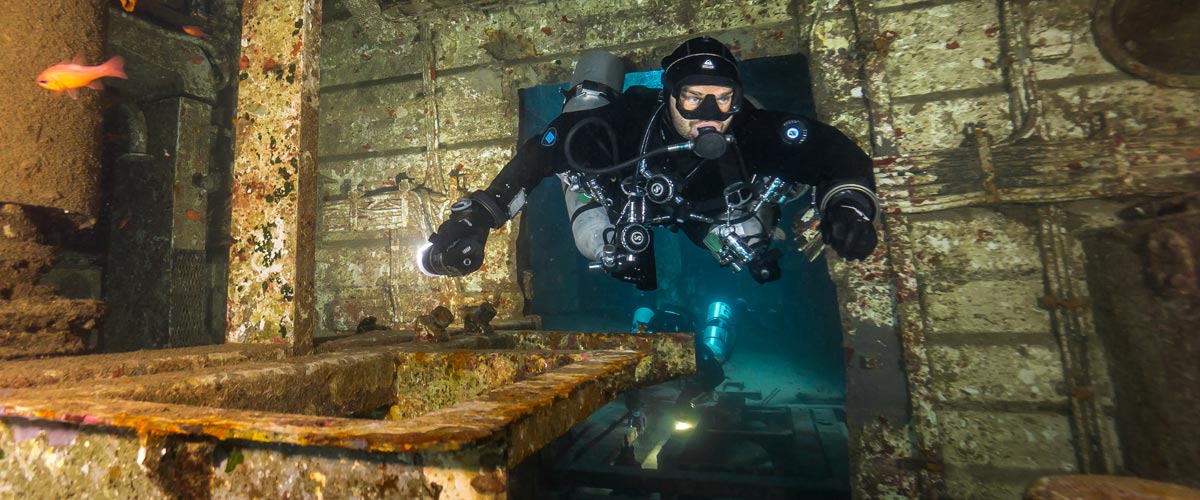Dive Training Blogs
Improve Compass Course Accuracy
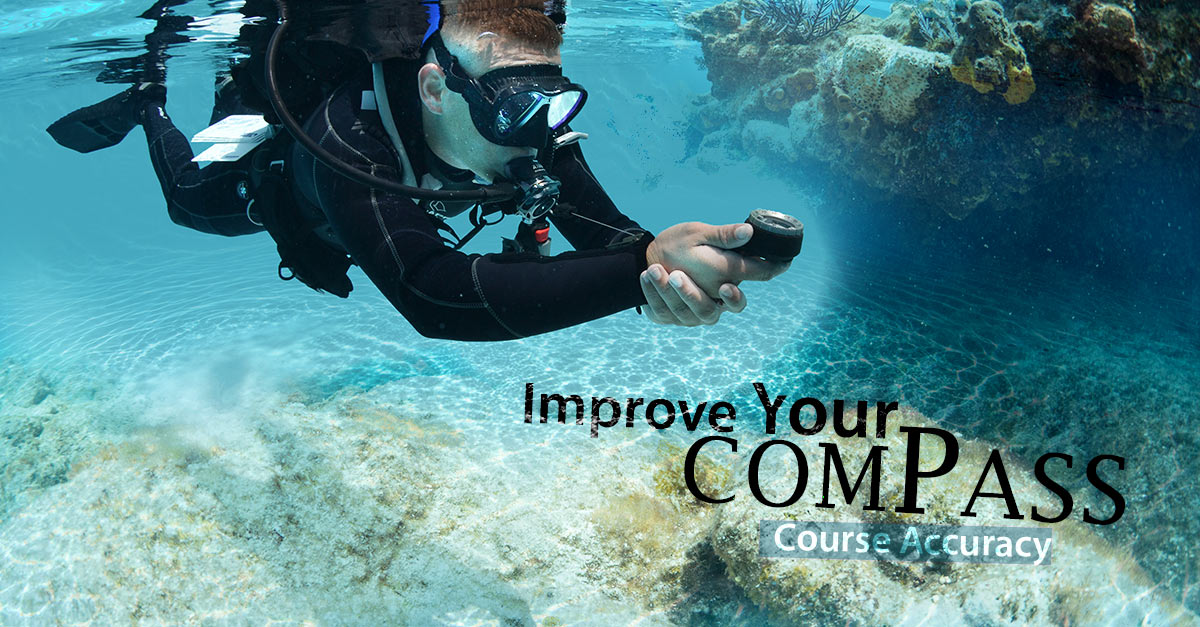
By Harry Averill
Dramatically improve your compass course accuracy.
It’s been a long and relaxing dive. You and your buddies have gone from one coral head to another. You snap photos and marvel at the aquatic life. The catch is, your pressure gauges say it’s time to head back to the boat. Unfortunately, you’ve lost track of where you are.
The good news is, you are in very shallow water. Coming to the surface to take a compass heading on the boat won’t create the problems usually associated with bounce dives and sawtooth profiles. You surface and see the boat approximately 100 m/330 ft away. You take a heading on the boat so you can return on the bottom.
You and your teammates could swim back on the surface. But you remember your instructor telling you to avoid long surface swims when possible. Underwater, you avoid waves, strong surface currents, and boat traffic. You have plenty of air left, so returning to the boat underwater seems like the best option.
With your buddies in tow, you align the centerline of your compass with the centerline of your body and swim at a relaxed pace. You remember from your Advanced Adventures course you can expect to cover roughly 25 m/80 ft per minute at this pace. Your relaxed pace should get you back to the boat in four minutes.
Four minutes pass. You look up. No boat. Not even the shadow of the boat on the bottom.
You and your teammates surface. Looking around, you spot the boat 20 m/65 ft away. You elect to swim the rest of the way on the surface.
You’re frustrated, though. All the way back, you kept your eyes glued to the compass dial. You did your best to keep your body aligned with the compass’s centerline. What went wrong? And what can you do to prevent this from happening in the future?
Compass use has limits
Underwater compasses work best over short distances. Why? Because no matter how carefully you try to keep your body aligned with the compass, you can still be off by more than 10 to 15 degrees. Several factors can affect this.
Despite your best efforts, the centerline of your compass may not be perfectly aligned with your body. This is especially true when using wrist-mounted compasses or compasses built into wrist-mounted computers.
A current coming from either side of your direction of travel can easily push you off course.
Most of us have a leg which is slightly stronger than the other. You tend not to notice this when kicking, but your dominant leg can push you off course in the opposite direction.
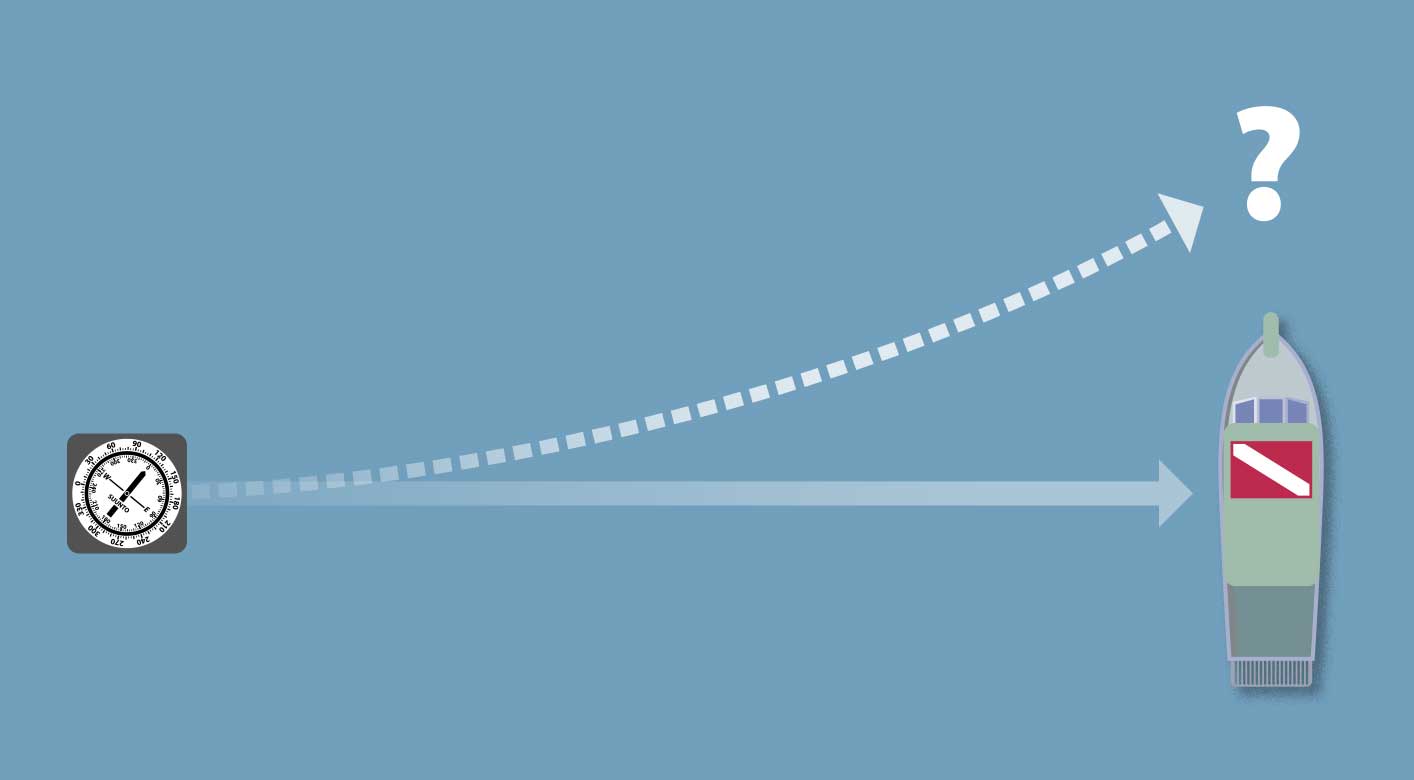
As the earlier example shows, over the length of a soccer or football field, these factors can cause you to miss your target by more than the length of a dive boat.
So what can you do?
There are several steps you can take to improve compass course accuracy.
- Keep compass legs short: If you must travel a long distance in shallow water, consider surfacing partway through to double-check your heading.
- Use a frog kick: It is less likely to affect your course if one leg is stronger than the other.
- Allow for current: If you detect a cross current, alter your course slightly in the direction from which the current is coming.
This may be the best trick
If swimming in poor visibility or over a featureless bottom, you may have no choice but to keep your eyes glued to the compass and hope for the best. But if you have even modest visibility, there is a trick that can dramatically improve your compass course accuracy. Here is how it works:
- Start by pointing your compass in the right direction. In other words, the heading you set on the surface.
- Sight down the centerline of the compass. See if it is pointing directly at an object in the distance. It can be a rock formation, a coral head, vegetation or a man-made item. It doesn’t matter.
- If it is, put the compass down and swim to the object. If it is pointing slightly to the right or left of an object, swim to that point.
- When you reach the object, use the compass to identify yet another distant object and swim to it.
- If there are no objects in your line of travel, follow the compass as you normally would until you see an object in your path. Then swim to it.
Repeat this process until you arrive at your destination.
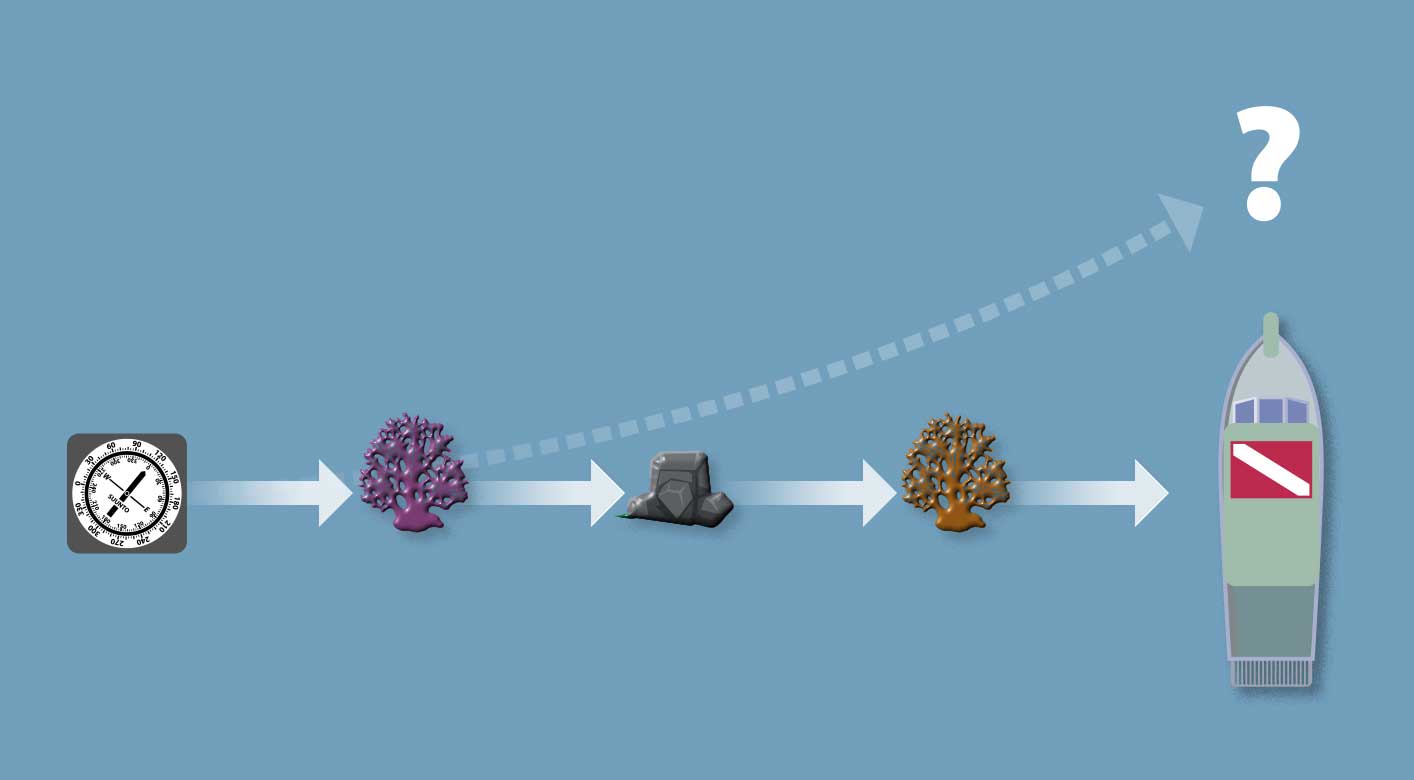
Because the objects to which you are swimming can’t move, you can achieve close to 100 percent accuracy. It’s also a lot more fun than having your eyes constantly glued to the compass dial.
Things to remember
Compasses can help you in several ways.
- If you know the correct heading, they can help you find a wreck or other dive site when entering from shore.
- They can help you take a shortcut across a body of water rather than having to swim all the way around the edge.
- As you read at the beginning of this article, if you lose your bearings in shallow water, surfacing to take a compass heading on the boat or exit point can allow you to return underwater.
Preventing problems, however, is better than having to solve them.
- Make sure you always know where you are underwater. Don’t just wander aimlessly.
- Remember also surfacing to take a compass heading on your exit point may only be a viable option if diving in shallow water, typically 6-10 m/20-30 ft or less. If deeper than this, you do not want to be bouncing up and down like a yoyo.
- If using a dive charter, remember the captain probably went to great lengths to park over the best underwater scenery. You’ll see the most by sticking close to the boat.
Your Open Water Diver course covered only the most basic facets of underwater navigation.
You can learn more about finding your way underwater by taking the SDI Advanced Adventures course.
You can further expand on this by following Advanced Adventures with the SDI Underwater Navigation Specialty Diver course.
Just ask your instructor or SDI Dive Center.
![]() To find out more about International Training, visit www.tdisdi.com.
To find out more about International Training, visit www.tdisdi.com.
Blogs
Intro to Tech: What is it about?
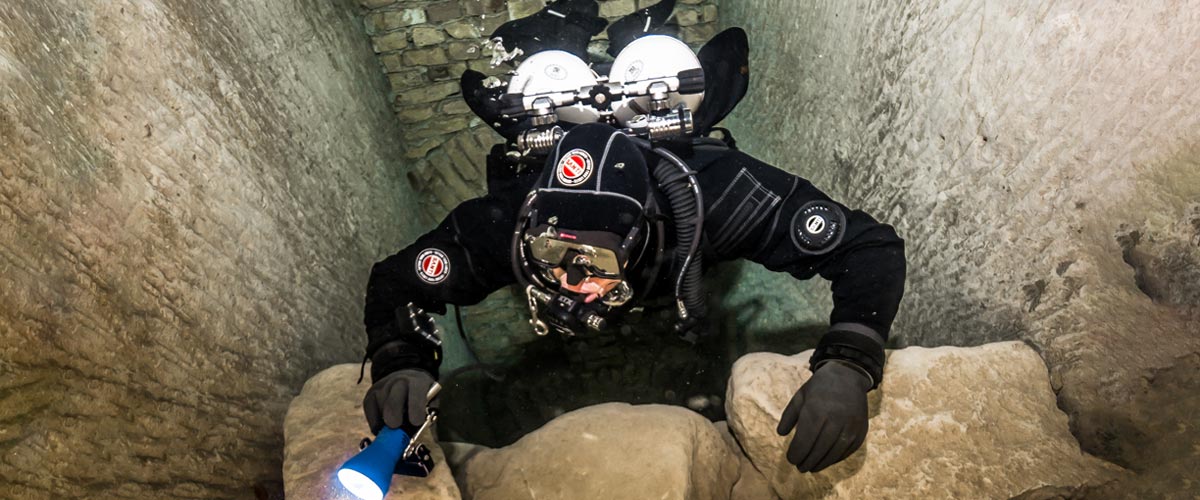
Article by José Pablo Mir
Pictures by Cezary Abramowski
The world of technical diving is exciting. It opens the door to new sites, depths, and bottom times. More importantly, it opens our minds to a new way of planning, facing, and experiencing dives, even those not purely technical.
Becoming a technical diver is a process, and like in other aspects of life, we should find the proper entry point that suits us best based on our knowledge and experience. The Introduction to Technical Diving course from TDI -the world’s largest and most recognized technical diving teaching organization- is the best option for divers who have yet to gain experience in the fundamental aspects of this new practice. The course’s content and its embrace of new techniques and technologies make it possible to acquire a solid foundation to learn and gain experience in this practice properly.
Becoming a technical diver is not something that happens overnight, whether deciding to become one or receiving a certification card stating we are now technical divers. It is a slow process extending farther away than any introductory course. It requires effort and dedication. But it will bring us satisfaction from day one -or two.
It is a matter of mentality
First, we must understand and accept that technical diving, involving greater depths, longer bottom times, exotic gases, virtual or real ceilings, and more, comes with higher levels of risk than the sport diving we have been practicing until now.
Although this discussion usually starts with a warning about risks, as I’ve done in the previous sentence, our practice is not a game of chance.
Technical diving is a rational activity that requires maturity and good judgment, and we will put everything into ensuring that each dive is a successful one -meaning we return from it safe and sound. With this understanding, we will strive to establish a mental attitude more aligned with our practice and its realities.
This new “technical diver” mindset we will develop will lead us to be more cautious in our executions, more analytical in our plans, more rational in our strategies, and more detailed in our procedures.
Experience will keep teaching us to know ourselves better, to keep our anxiety and other emotions under control, and to manage our impulses. Over time, our senses will sharpen, and we will be more attentive to the particulars of the situation we find ourselves in.
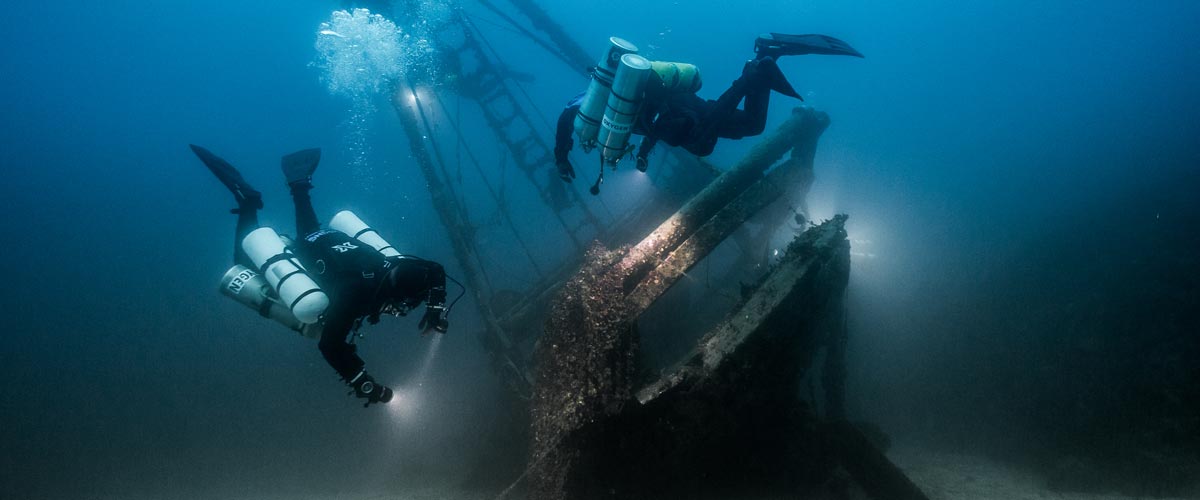
Strategies and procedures
Our strategies, those broad guiding lines tracing the path to follow, from how to approach planning to where, with what, and how we are willing to get there, will be more specific and more practical. Not because they magically become so, but because we will consciously and deliberately frame them that way.
We will establish clear, concise, and realistic procedures. Not only for the undesirable situations that may present themselves but also for those that are part of our dive objectives.
Even though, as technical divers, we often use equipment different from what we were previously accustomed to, it is essential to note that the gear does not make the diver. In a way, we could consider such equipment as the necessary tools to implement what our goal seeks to achieve, according to our strategies and procedures.
Technique plays an important role
We must put our greatest effort into learning and perfecting the different techniques we will be acquiring. Buoyancy, trim, propulsion, cylinder handling, deploying DSMBs and lift bags, valve drills, and more are essential skills we must begin to master to progress in our art. What we cannot do, when we need to do it, can harm us.
Our techniques must be effective and achieve the purpose for which they were devised. But they must also be efficient and require the least resources possible, including the time they take and the effort they demand. Effectiveness and efficiency will prevail over beauty and other considerations that may come to mind, although none of them should be mutually exclusive. A technique executed efficiently and effectively tends to have an inherent beauty.
Refining techniques is a lifelong mission. Some of them will be easy to master from the go; others, on the other hand, will be our life mission and will require many repetitions just to resemble the idea we have in mind of how they should be executed.
We must consider the environment
Our learning, the needs and musts of the practice we engage in, the experience we gradually gain, our strategies and procedures, and even our equipment and tools change with the environment.
Diving in the ocean, everything about us must be suitable for ocean dives. Conditions there rarely emulate those found in a pool, lake, or river. Variable winds and currents, greater depths, visibility conditions, other divers with uncertain skills around us, marine life, maritime traffic, distance from the coast, and many other factors add complexity and uncertainty.
It is never necessary to master the pool on the first day, but planning and aspiring to gradually cope with the ocean’s conditions is essential.
The cost of good training
We are aware that our resources are often scarce in relation to the possibilities of use we could give them if they were not. To a greater or lesser extent, we are part of the economic reality in which we are embedded.
Fortunately, the cost of good technical diver training is not an entry barrier. Comparing training and equipment costs, we see that the former are generally lower. Yes, lower cost for personalized service, essential to our future
performance and safety, than for a series of mass-produced products that are mere, albeit necessary, tools for an end.
The value of good training
The value of the training we received encompasses a range of characteristics, from emotional and methodological to technical and technological. TDI and its Introduction to Technical Diving course offer a deep and modern approach, with a teaching strategy that aims to create thinking divers, not merely obedient ones.
As technical divers, our knowledge is our primary tool. In this type of activity, what we don’t know can harm us.
Is this course optional?
Unfortunately, the fact that this Introduction to Technical Diving course is not a prerequisite for any subsequent training is an invitation to consider it optional. And we all know what usually happens to “optional” under budget constraints.
However, this course should be seen as optional only by those divers who are somehow familiar with the use of technical equipment, who have a mindset more in line with the requirements of this type of diving, who plan and execute the dives the proper “technical” way, who know their gas consumption rate, who are not intimidated by non-decompression tables, who feel comfortable using their dive computers, and know the techniques and have at least an acceptable level of buoyancy, positioning, and propulsion. Those can go straight to a more advanced training course, such as TDI’s Advanced Nitrox.
We must ask ourselves whether or not we are in that group.
Remember our goal: to have fun
Recreational diving is our passion. Jumping into the water carrying heavy equipment and having properly dotted our I’s and crossed our T’s have only one ultimate goal: fun. This is the activity we have chosen as a hobby. We must enjoy it; it must give us pleasure and make us vibrate.
Having a good time is not optional!
Blogs
Four opportunities to go pro in 2024 with Dive Friends Bonaire
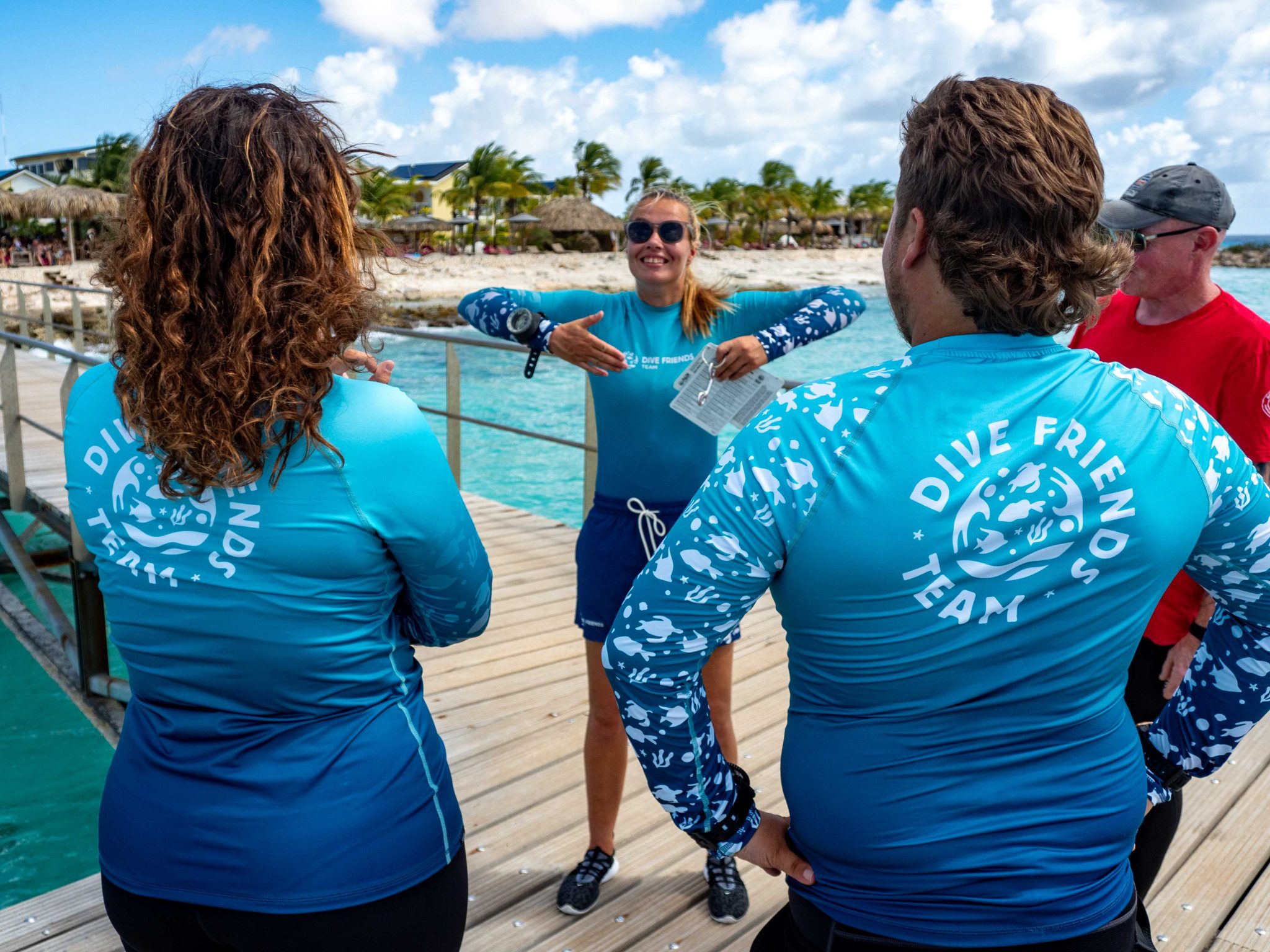
Dive Friends teaches the Instructor Development Course (IDC) several times a year to students who are eager to share their passion for diving with the world.
Dive Friends is known for the personal approach throughout the course. Their in-house course director will lead the students through every essential step, mentoring them to achieve their fullest potential as a dive instructor.
Applications for the following IDC start dates are now open:
- 12 April
- 5 July,
- 20 September
- 29 November
Partnership with Casita Palma
If the student opts for the IDC-Deluxe or IDC-Supreme package, their accommodation will be arranged for them at Casita Palma. This small and quiet resort is within walking distance from Dive Friends Bonaire’s main dive shop location and has everything you need to relax after an intense day of IDC training. Breakfast is included, so the student will always be fuelled and ready for their day.
Contact Dive Friends Bonaire’s Course Director Eddy for more information: coursedirector@divefriendsbonaire.com.
-

 News3 months ago
News3 months agoHone your underwater photography skills with Alphamarine Photography at Red Sea Diving Safari in March
-

 News3 months ago
News3 months agoCapturing Critters in Lembeh Underwater Photography Workshop 2024: Event Roundup
-

 Marine Life & Conservation Blogs2 months ago
Marine Life & Conservation Blogs2 months agoCreature Feature: Swell Sharks
-

 Blogs2 months ago
Blogs2 months agoMurex Resorts: Passport to Paradise!
-

 Blogs2 months ago
Blogs2 months agoDiver Discovering Whale Skeletons Beneath Ice Judged World’s Best Underwater Photograph
-

 Gear Reviews2 months ago
Gear Reviews2 months agoGear Review: Oceanic+ Dive Housing for iPhone
-

 Marine Life & Conservation2 months ago
Marine Life & Conservation2 months agoSave the Manatee Club launches brand new webcams at Silver Springs State Park, Florida
-

 News3 months ago
News3 months agoWorld’s Best Underwater Photographers Unveil Breathtaking Images at World Shootout 2023















